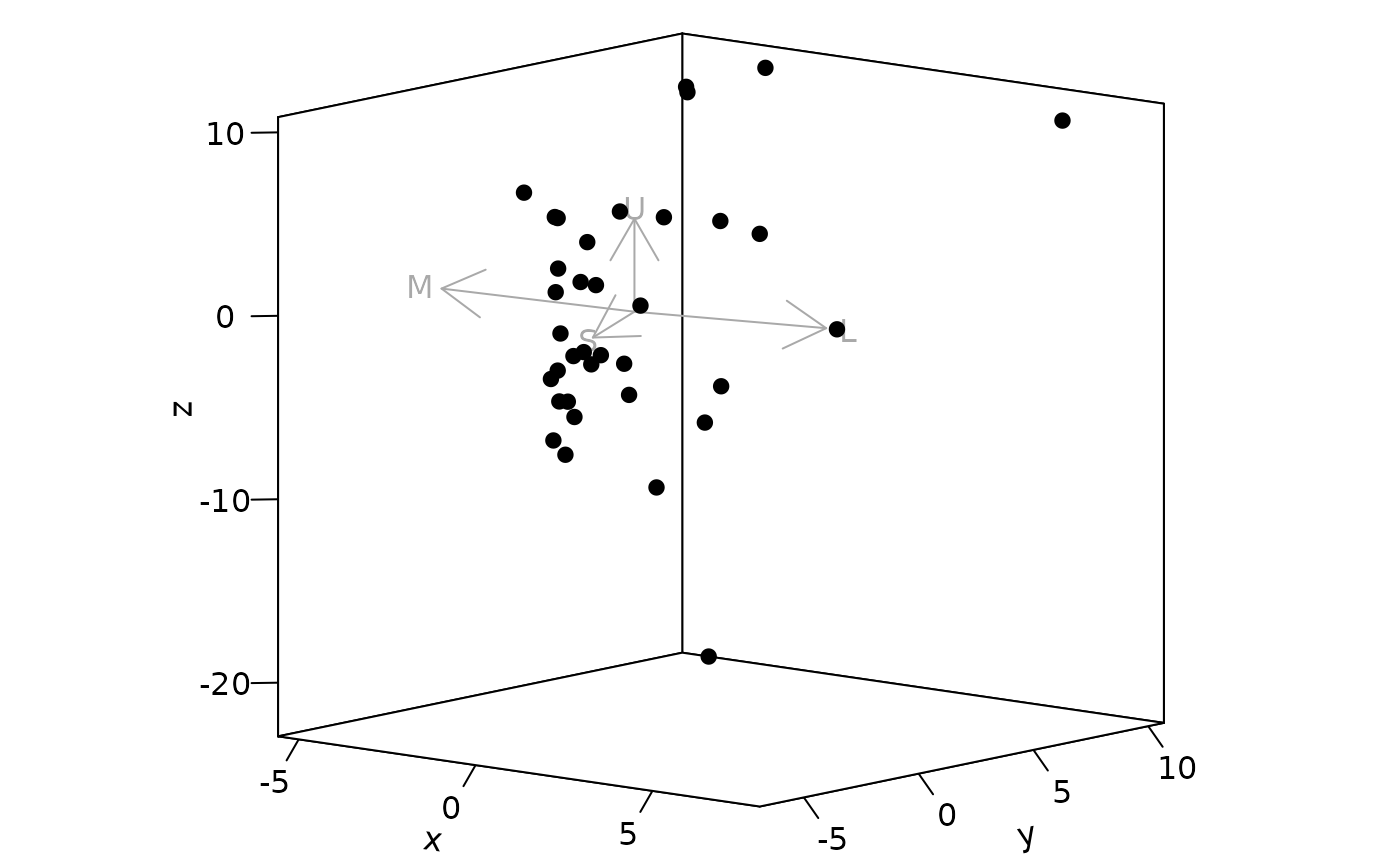Plot options for jnd2xyz objects.
Usage
jndplot(
x,
arrow = c("relative", "absolute", "none"),
achro = FALSE,
arrow.labels = TRUE,
arrow.col = "darkgrey",
arrow.p = 1,
labels.cex = 1,
margin = "recommended",
square = TRUE,
...
)Arguments
- x
(required) the output from a
jnd2xyz()call.- arrow
If and how arrows indicating receptor vectors should be drawn. Options are
"relative"(default),"absolute"or"none". See description.- achro
Logical. Should the achromatic variable be plotted as a dimension? (only available for dichromats and trichromats, defaults to
FALSE).- arrow.labels
Logical. Should labels be plotted for receptor arrows? (defaults to
TRUE)- arrow.col
color of the arrows and labels.
- arrow.p
scaling factor for arrows.
- labels.cex
size of the arrow labels.
- margin
accepts either
"recommended", where the function will choose margin attributes, or a numerical vector of the formc(bottom, left, top, right)which gives the number of lines of margin to be specified on the four sides of the plot. (Default varies depending on plot dimensionality).- square
logical. Should the aspect ratio of the plot be held to 1:1? (defaults to
TRUE).- ...
additional parameters to be passed to
plot(),arrows()andgraphics::persp()(for 3D plots).
Note
the arrow argument accepts three options:
"relative": With this option, arrows will be made relative to the data. Arrows will be centered on the data centroid, and will have an arbitrary length of half the average pairwise distance between points, which can be scaled with thearrow.pargument."absolute": With this option, arrows will be made to reflect the visual system underlying the data. Arrows will be centered on the achromatic point in colourspace, and will have length equal to the distance to a monochromatic point (i.e. a colour that stimulates approximately 99.9% of that receptor alone). Arrows can still be scaled using thearrow.pargument, in which case they cannot be interpreted as described."none": no arrows will be included.
References
Pike, T.W. (2012). Preserving perceptual distances in chromaticity diagrams. Behavioral Ecology, 23, 723-728.
Author
Rafael Maia rm72@zips.uakron.edu
Examples
# Load floral reflectance spectra
data(flowers)
# Estimate quantum catches visual phenotype of a Blue Tit
vis.flowers <- vismodel(flowers, visual = "bluetit")
# Estimate noise-weighted colour distances between all flowers
cd.flowers <- coldist(vis.flowers)
#> Quantum catch are relative, distances may not be meaningful
#> Calculating noise-weighted Euclidean distances
# Convert points to Cartesian coordinates in which Euclidean distances are
# noise-weighted.
propxyz <- jnd2xyz(cd.flowers)
# Plot the floral spectra in 'noise-corrected' space
plot(propxyz)
